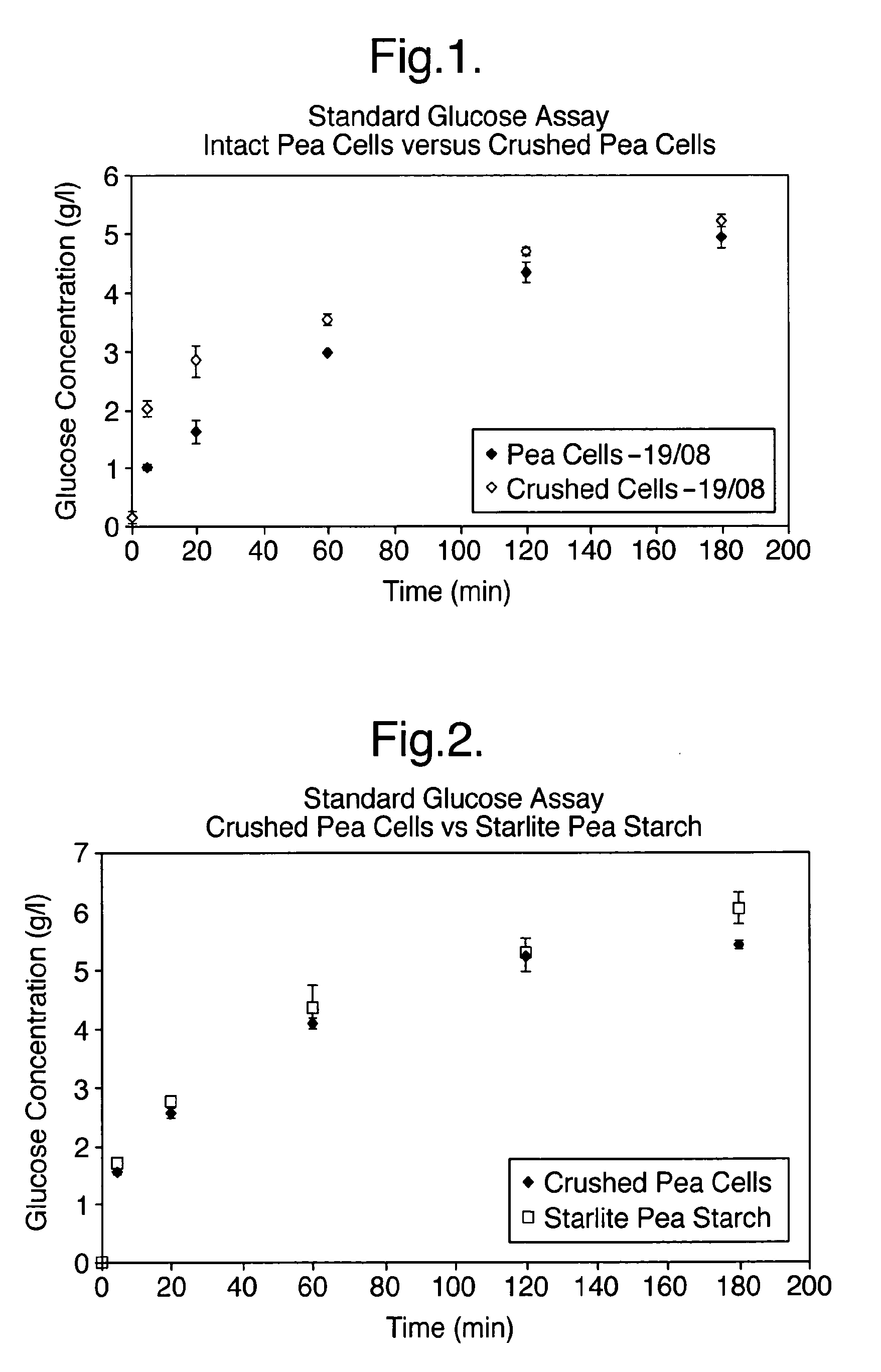Food Product and Process for Preparing it
a technology for food products and processes, applied in the field of food products, can solve the problems of reducing the effect of energy, limiting the concept of cereals and biscuits, and most ‘energy’ claims are not scientifically substantiated
- Summary
- Abstract
- Description
- Claims
- Application Information
AI Technical Summary
Benefits of technology
Problems solved by technology
Method used
Image
Examples
example 1
Pea Cells
[0060]Cells were isolated from dried marrow fat peas purchased from the local supermarket. The intercellular interactions were weakened by overnight soaking in 0.2 g / ml NaHCO3, followed by a heat treatment at 70° C. during 90 minutes. The cells were then physically separated by 3 subsequent sieving steps (1 mm, 0.5 mm and 0.25 mm respectively). After the sieving steps the pea cells were spray-dried (LabPlant, SDS20) and stored in powder form to be used in the assessment of the barrier properties of the cells. To assess the effects of cell barrier properties, starch hydrolysis assays were applied to both the intact cell powder and the physically crushed cell powder. The crushed cell powder was prepared from the dried pea cells after sieving through a 0.075 mm sieve. The material that passed through the sieve was crushed with mortar and pestle into crushed pea powder. Before the enzyme assay both the intact and the crushed cell powder were heat treated at 100° C. for 40 minut...
example 2
Hydrolysis of Banana Starch
[0062]Banana cells were isolated in a similar manner. To this end unripe banana (plantain) fruit was peeled and cut into small slices. Slices were soaked overnight in a citric acid buffer containing 1% ascorbic acid and 0.185% (w / w) EDTA and blended in a kitchen blender. The resulting slurry was sieved through 0.5 and 0.25 mm sieves and cheesecloth. The filtrate was stored chilled overnight and the cells were dried in an oven. The cells were suspended 0.2M phosphate and heated at 97° C. during 10 minutes. After cooling the rate of hydrolysis of the banana starch was determined with the Bernfeld assay. For comparison, a same amount (as determined by the total starch analysis assay) of cooked maize starch was also hydrolysed in the Bernfeld assay.
[0063]After a heat treatment, a slow hydrolysis of the banana starch as compared to the maize starch was obtained, indicating that controlled energy release can be obtained by means of intact banana cells. The resul...
PUM
 Login to View More
Login to View More Abstract
Description
Claims
Application Information
 Login to View More
Login to View More - R&D
- Intellectual Property
- Life Sciences
- Materials
- Tech Scout
- Unparalleled Data Quality
- Higher Quality Content
- 60% Fewer Hallucinations
Browse by: Latest US Patents, China's latest patents, Technical Efficacy Thesaurus, Application Domain, Technology Topic, Popular Technical Reports.
© 2025 PatSnap. All rights reserved.Legal|Privacy policy|Modern Slavery Act Transparency Statement|Sitemap|About US| Contact US: help@patsnap.com



